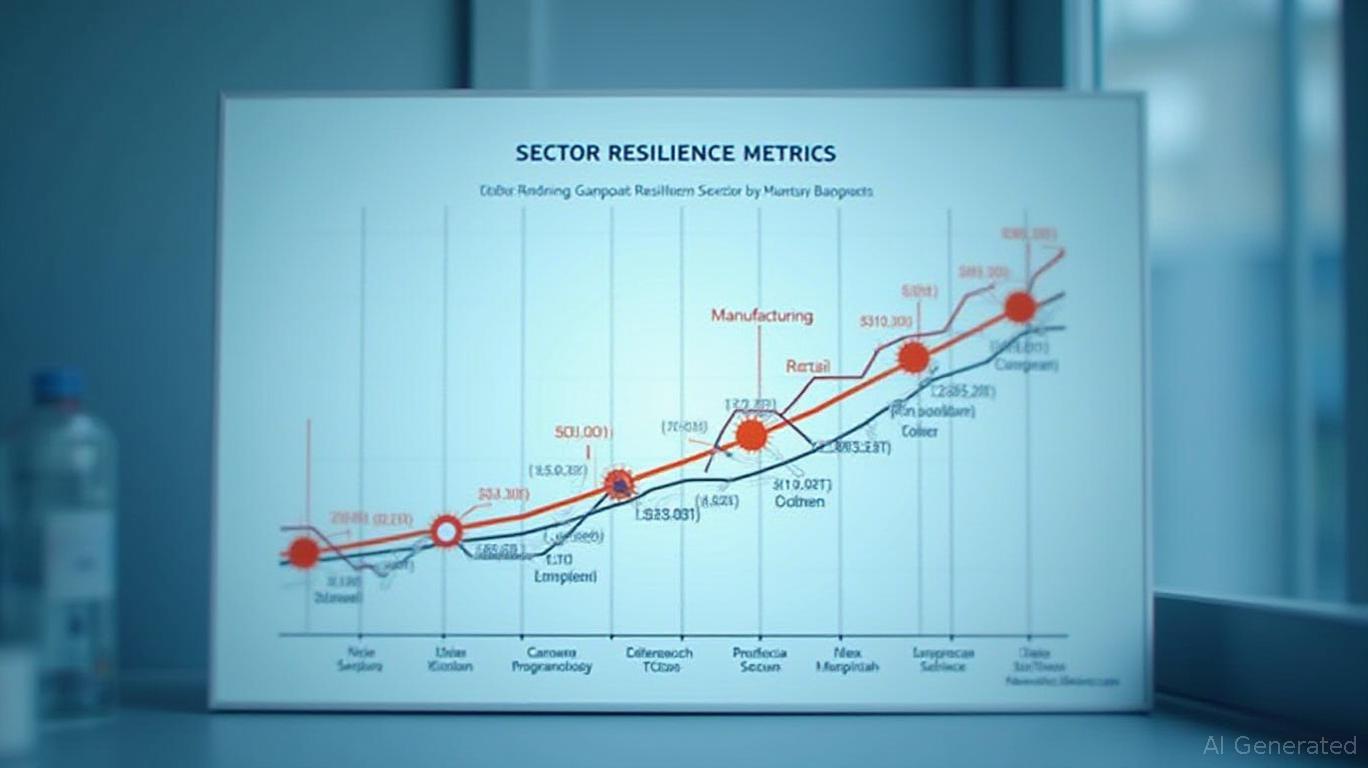Navigating Tariff Risks and Economic Uncertainty: Sector-Specific Resilience and Portfolio Tactics
The Umpqua Bank 2025 Business Barometer Report reveals a stark divide in economic resilience between middle-market firms and small businesses, with tariffs and policy uncertainty amplifying sector-specific vulnerabilities. For investors, this bifurcation offers both risks and opportunities. Below, we analyze the sectors best positioned to navigate these challenges and outline tactical adjustments to align portfolios with shifting business priorities.

Sector-Specific Resilience: Where to Find Strength
- Technology & AI Adoption
Middle-market firms are leading the charge in adopting generative AI, with 42% implementing it broadly and 86% prioritizing AI-skilled hires. This sector's agility in digitization and automation positions it as a core growth driver.
Investment angle: Focus on firms with AI-driven revenue streams, such as cloud infrastructure (e.g., Microsoft, AWS) and industrial automation (e.g., Siemens, Rockwell Automation).
- Manufacturing & Supply Chain Diversification
Over 50% of middle-market manufacturers have reshored production, reducing reliance on volatile global supply chains. This trend benefits sectors like industrial equipment and materials.
Investment angle: Industrial stocks (e.g., Caterpillar, 3M) and materials companies (e.g., Dow, DuPont) with strong domestic footprints are poised to outperform.
- Real Estate & Capital Allocation
Falling interest rates have spurred middle-market firms to prioritize real estate investments, with 60% planning property expansions. Real estate investment trusts (REITs) and construction firms benefit from this shift.
Investment angle: REITs in logistics (e.g., Prologis) and office spaces (e.g., Simon Property Group) offer defensive income streams amid macroeconomic uncertainty.
- Small Businesses: Caution Required
Only 29% of small businesses rate the economy positively, with 43% expecting stagnant demand. Sectors like retail and hospitality remain vulnerable to rising costs and inflation.
Investment angle: Avoid overexposure to small-cap indices (e.g., IWM) unless targeting niche firms with sustainable competitive advantages.
Tactical Portfolio Adjustments
Rotate Toward Resilient Sectors
Shift allocations toward technology, industrials, and real estate, which align with Umpqua's findings of strategic investment priorities. Reduce exposure to sectors where small businesses dominate, such as consumer discretionary retail.Leverage Defensive Plays
Inflation-protected assets (e.g., TIPS) and dividend-paying REITs can hedge against economic volatility. The report's emphasis on cybersecurity (41% of middle-market firms report cyberattacks) also points to opportunities in cybersecurity stocks (e.g., CrowdStrike, Palo Alto Networks).Monitor Election-Driven Uncertainty
Middle-market firms are 3.5x more likely to accelerate decisions pre-election, suggesting a window for M&A activity in tech and industrials. Investors should stay agile, using options strategies to capitalize on short-term volatility.Cash Management and Liquidity
The report advises small businesses to optimize credit lines and pay down term debt—a lesson for investors to favor firms with strong balance sheets and manageable debt ratios.
Risks and Considerations
- Tariff Volatility: New tariffs could disrupt supply chains, particularly in sectors reliant on imports. Monitor Umpqua's recommended resources (e.g., International Trade Office) for real-time updates.
- Small Business Fragility: Persistent inflation and limited access to capital may force consolidation in vulnerable sectors.
- Cybersecurity Costs: Rising fraud risks (e.g., real-time payment fraud) could pressure margins unless mitigated by robust safeguards.
Conclusion
The Umpqua Barometer underscores a “two-speed economy,” with middle-market firms driving growth through tech, manufacturing, and real estate, while small businesses face structural headwinds. Investors should prioritize sectors demonstrating strategic agility and resilience, while maintaining caution toward vulnerable industries. Tactical shifts—such as overweighting industrials, underweighting small caps, and hedging with defensive assets—will be critical to navigating this divided landscape.
As uncertainty persists, the mantra remains: adapt, diversify, and stay informed.
Final thought: The firms and sectors thriving in 2025 will be those that treat tariffs as a catalyst for innovation, not an obstacle.
Data queries and visualizations can be accessed via financial platforms like Bloomberg or Fidelity for real-time analysis.

Comments
No comments yet